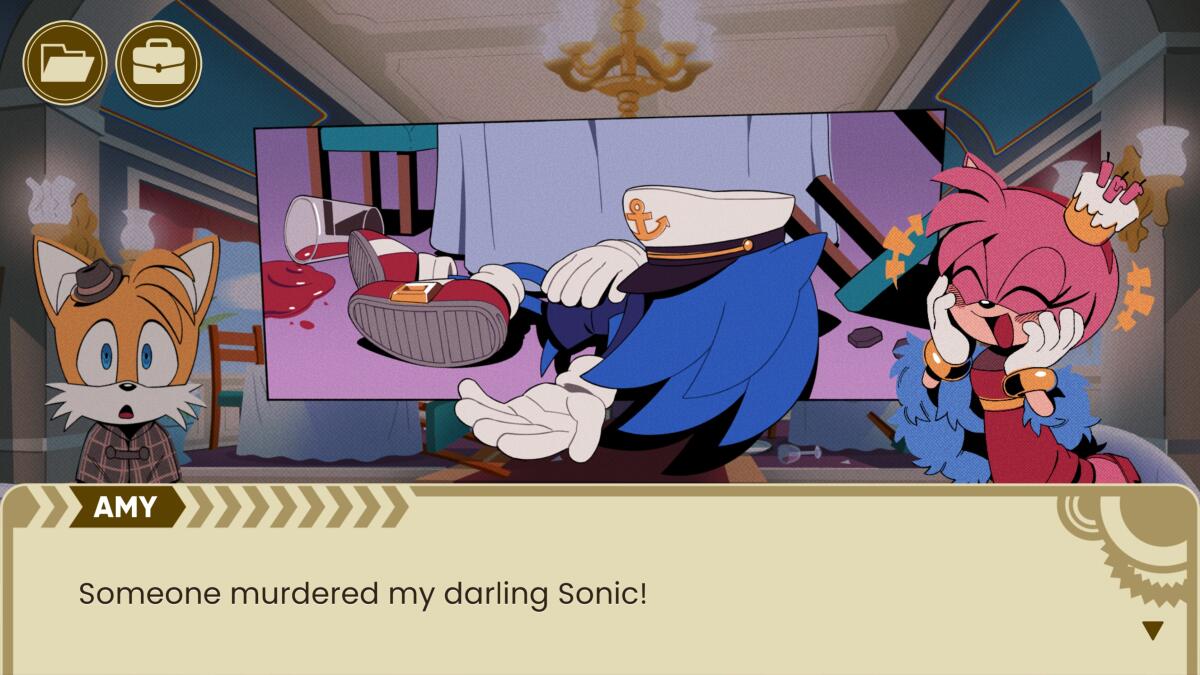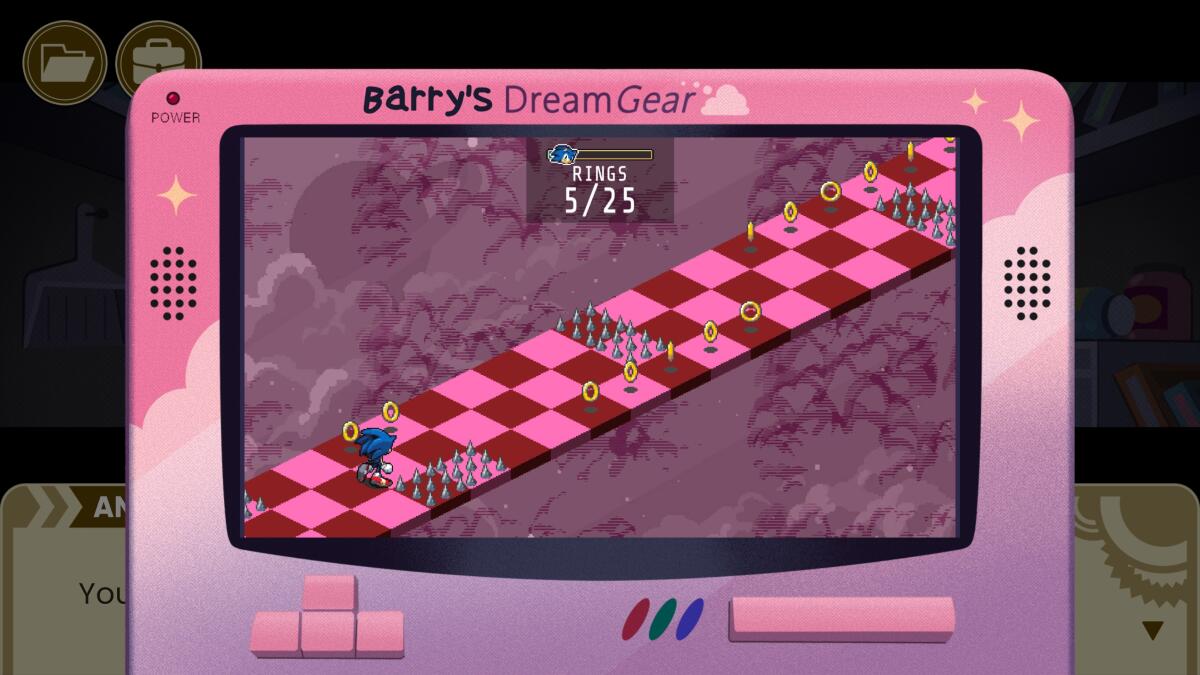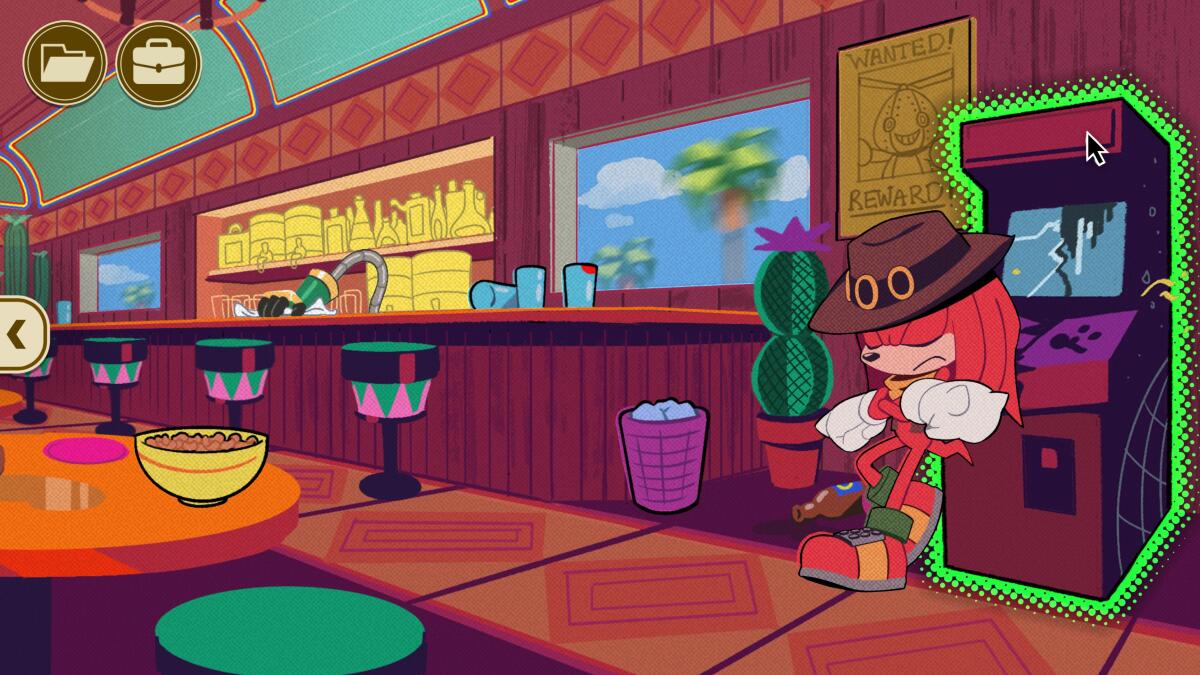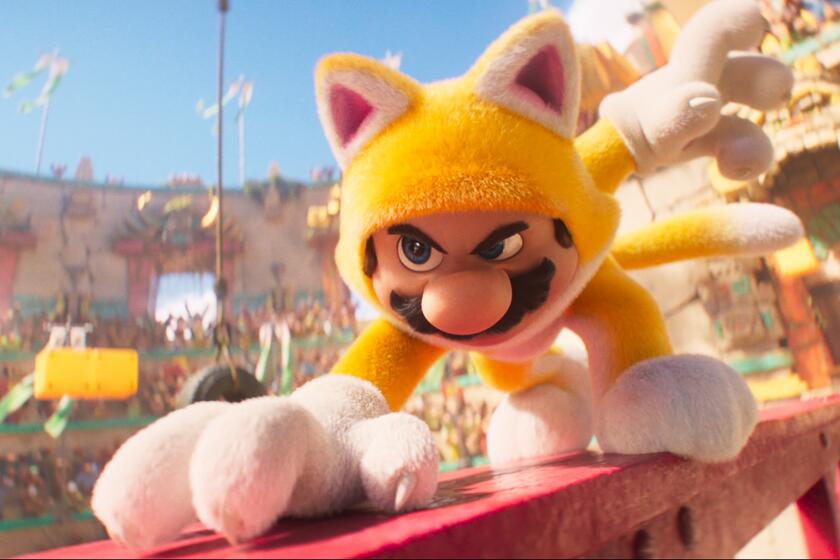How Sega killed Sonic the Hedgehog, got away with murder and made a surprisingly sincere game

It started as a title that was meant to be an April Fools’ joke: “The Murder of Sonic the Hedgehog.” The team behind the funny idea had a hook, but did they have a game?
“We would have meetings together: ‘Who killed Sonic? How did any of this happen?’ We knew that the headline was ‘Sonic is dead,’ but how did any of this happen?” says Pasadena-based game developer Greg Batha of the early gatherings he had with a small team that developed the game. “The Murder of Sonic the Hedgehog” was surprise-released on March 31 for PCs and Macs. Developed in relative secrecy over the last few years, “The Murder of Sonic the Hedgehog,” available for free, turned out to be more than a clever, joke-ready title.
“The Murder of Sonic the Hedgehog” is a relatively earnest game about friendships and boundaries, the ones we set — or fail to set — with those who are close to us. It also has some things to say about the parameters we negotiate with our profession and how we treat those in the service industry. The game manages to be a family-friendly mystery adventure with a few grand ideas sandwiched into about two hours of play time — likely more, if you, like me, struggle with the run-and-jump minigames. And it does so by toying with one of the most popular video game characters ever created.
The conceit: Sonic’s pal Amy Rose is throwing herself a birthday party aboard a murder-mystery party train. “The Murder of Sonic the Hedgehog” is part “Murder on the Orient Express” and part nod to the “Phoenix Wright” legal detective games, a visual novel in which we explore various rooms on the train and interrogate Sonic’s pals with the evidence we find by clicking on it. It’s largely a simple, conversation-focused game. We learn, before reaching the opening credit scene, that Sonic is dead. Amy thinks it’s all part of the game-within-a-game, but there are allusions to the idea that Sonic is actually hurt. Thus, the “Knives Out”-like game is afoot.
Setting the game amid a birthday party allowed the team to play with is-he-or-isn’t-he dead tension, while also delivering on the promise that Sonic would be killed — or play-killed. “That allowed us to keep a lot more intrigue,” Batha says. “It also has the story make more sense. Because Sonic just being dead wraps us into a corner.”

The idea, says Batha, was born at the premiere of the 2020 “Sonic the Hedgehog” film, when talking with Katie Chrzanowski and Justin Thormann of Sega’s social media team, who helped push the concept to Sonic’s stewards at Sega. It’s worth noting, of course, that Sega has experimented with Sonic over the years, taking the character beyond his ultra-fast, run, roll and jump roots. Even the most recent Sonic game — last year’s “Sonic Frontiers” — tweaked the formula, allowing for multiple play styles and placing the character in more open, abstract worlds.
“We knew it was a strong concept, just in terms of what is an effective social media move,” Batha says. “This was a pretty good one, as long as it isn’t something that makes people very upset. We really cared a lot going into this, and we knew we weren’t going to make something stupid and inauthentic, like downplaying the importance of Sonic and his friends. We figured those good intentions, plus how much fun the headline would be, would get everyone on board.”
Thankfully, Batha knew a thing or two about making games with attention-grabbing titles with hidden sincerity. His resume includes the development of “Dream Daddy: A Dad Dating Simulator,” a gay dad dating game that sold lust but actually gave players a thoughtful game about romance as an adult and parenting. “Both games are games that have meme hooks,” Batha says. “‘Dream Daddy’ is the gay dad game. And Sonic gets murdered — ‘haha, they finally killed him.’ And you get into them because you heard this joke, but we kind of surprise with how genuine and meaningful all the interactions in the story are. There are things to learn, and lessons in these stories.”
In “The Murder of Sonic the Hedgehog,” that starts with the character the players puppeteer. They’re new on the job on the party train, and we christen them with a name of our choosing. But our avatar starts as someone who is relatively insecure, and Sonic’s pals don’t always treat them kindly, mocking us, for instance, when we try to take their food orders by labeling us “microwave master.” It’s implied that our character has bigger dreams, and they’re contrasted with a conductor of the train, who is retiring after decades on the job.
We sit down with ‘Super Mario Bros.’ creator Shigero Miyamoto ahead of the opening of the new animated film.
We wonder, for instance, if that is our future, and we struggle with the people-pleasing nature of the job. When one of Sonic’s friends — the jewel thief Rogue — wants to stage a heist to steal some of the train’s valuables, we hesitate as to whether or not to assert ourselves. Our protagonist, for instance, is torn with how serious to take the job, as it becomes clear as the game unfolds that the conductor won’t be able to retire so easily. It raises a question: How much should what we do for a living define us?
“The conductor starts to reveal that they’re very bound to their work,” Batha says. “They’re really experienced, but tied to their job, and if they want to leave their job isn’t necessarily letting them. The inexperienced one just wants to fit in and be there and matter, and the experienced one matters too much. Even if they want to leave their job, they can’t necessarily do that.”
The core theme of the game, however, is friendship, and how quickly and even sinister our relationships can become when one doesn’t maintain a boundary. “The Murder of Sonic the Hedgehog,” with its lighthearted tone and various minigames that recall the “Sonic” games of yore — plays largely with extremities, the healthy balance that is being authentic to one’s self, even if that self is the punch-ready Knuckles, and the toxicity that can develop when one lets selfish or sycophant behaviors creep into the relationship.

There are numerous twists and turns in the two-hour mystery game. True to the “Sonic” lore, machines and robots sometimes have a mind of their own. And sometimes they don’t know when to quit. Here, that means developing unhealthy attachment styles. If that all sounds a bit heady, know that the game is ultimately about friendship at its most heartwarming.
“Friends support each other and lift each other up, and help them be the best person they can be,” Batha says. “They do what is best for their friends and friendships, and they prioritize the well-being of their friends. Not in a bad way. No one should ignore their own wants and needs, but in this game you see a lot of people looking out for each other and pointing out the strengths of each other while covering for each others weaknesses.”
“The Murder of Sonic the Hedgehog” goes deep into Sonic lore. Batha says the team pulled from some of the “Sonic” comics over the years to help flesh-out backstories, and the art style, courtesy of Ellen Alsop, goes for a colorfully bright, storybook-like approach. While the team knew that the title — and release date timed for April Fools — would make the game seem like a pure social media play, the goal was to take Sonic and pals as seriously as possible.
“Sonic has something that all of us want, which is a coolness and a confidence,” Batha says. “He’s such a natural born leader. People naturally rally behind him and want to be like him. As a kid, I wanted to be like Sonic, to have that confidence, capability, reliability and dependability. And not only have those things but make it look easy. That’s what makes him such an ideal hero and inspiring character.”
Even, as “The Murder of Sonic the Hedgehog” makes clear, when he may not be alive.
More to Read
The biggest entertainment stories
Get our big stories about Hollywood, film, television, music, arts, culture and more right in your inbox as soon as they publish.
You may occasionally receive promotional content from the Los Angeles Times.












